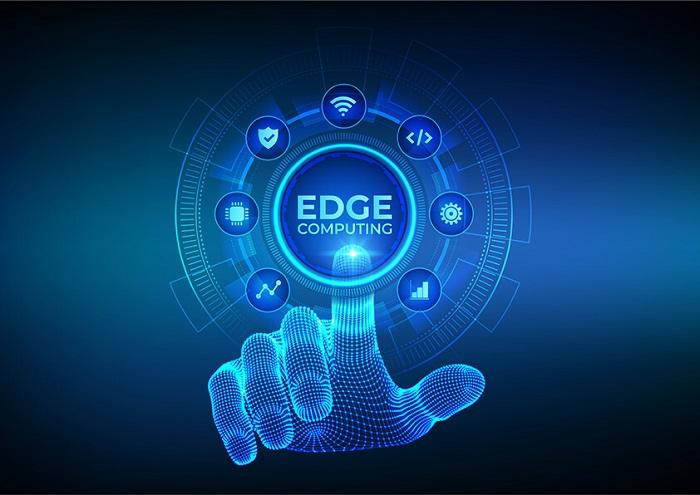Edge Computing Market Overview
The Edge Computing Market has emerged as a transformative force in the realm of information technology, driven by the increasing need for real-time data processing and analytics. Edge computing refers to the practice of processing data near the source of data generation rather than relying on a centralized data center. This paradigm shift is largely fueled by the proliferation of Internet of Things (IoT) devices, which generate vast amounts of data that require immediate analysis to enhance operational efficiency and decision-making processes. As organizations seek to reduce latency, improve bandwidth efficiency, and ensure data security, edge computing solutions are becoming integral to their digital transformation strategies.
The global edge computing market is projected to witness substantial growth over the coming years, with estimates suggesting it could reach several billion dollars by 2032.
Market Key Players
Several key players dominate the edge computing landscape, each contributing unique technologies and solutions that cater to diverse industry needs. Major companies include Cisco Systems, Inc., which offers robust networking solutions that facilitate edge computing deployments; Microsoft Corporation, known for its Azure IoT Edge services that enable seamless integration between cloud and edge environments; and Amazon Web Services (AWS), which provides a comprehensive suite of tools for developers looking to implement edge computing architectures. Other notable players include IBM Corporation, Google Cloud Platform, and HPE (Hewlett Packard Enterprise), all of which are investing heavily in research and development to enhance their offerings in this rapidly evolving market.
These companies are not only focusing on technological advancements but also forming strategic partnerships and collaborations to expand their market reach.
[PDF Brochure] Request for Sample Report:
https://www.marketresearchfuture.com/sample_request/3239
Market Segmentation
The edge computing market can be segmented based on component type, application area, organization size, and region. In terms of component type, the market is divided into hardware (such as gateways and routers), software (including analytics platforms), and services (like consulting and managed services). Application areas encompass various sectors such as manufacturing, healthcare, retail, transportation, smart cities, and energy management. Furthermore, organizations can be categorized into small & medium enterprises (SMEs) and large enterprises based on size. Geographically, the market is analyzed across North America, Europe, Asia-Pacific, Latin America, and the Middle East & Africa. Each segment presents unique challenges and opportunities that influence overall market dynamics.
Market Drivers
Several factors are driving the growth of the edge computing market. One significant driver is the exponential increase in IoT devices that require real-time processing capabilities. As industries adopt IoT technologies for automation and monitoring purposes, there is a growing demand for solutions that can process data locally to minimize latency issues associated with cloud-based systems. Additionally, rising concerns regarding data privacy and security have prompted organizations to seek localized processing options that reduce exposure to potential cyber threats inherent in centralized systems. Moreover, advancements in artificial intelligence (AI) and machine learning (ML) technologies are enabling more sophisticated analytics at the edge level—further propelling adoption rates across various sectors.
Market Opportunities
The edge computing landscape presents numerous opportunities for innovation and growth. With industries increasingly recognizing the value of real-time insights derived from local data processing capabilities, there is a burgeoning demand for tailored solutions that address specific operational challenges faced by different sectors. For instance, in manufacturing settings where predictive maintenance is critical for minimizing downtime costs, customized edge solutions can provide actionable insights directly from machinery sensors without relying on cloud connectivity.
Additionally, as 5G networks continue to roll out globally—offering enhanced speed and connectivity—edge computing will play a pivotal role in unlocking new use cases across smart cities initiatives such as traffic management systems or public safety applications.
Regional Analysis
Regionally speaking, North America currently holds a significant share of the global edge computing market due to early adoption trends among enterprises coupled with substantial investments in IoT infrastructure development. The United States remains at the forefront given its technological prowess; however, Asia-Pacific is expected to witness rapid growth owing to increasing urbanization rates along with government initiatives aimed at promoting smart city projects throughout countries like China and India. Europe also presents lucrative opportunities driven by stringent regulations surrounding data protection laws such as GDPR which encourage localized processing methods within member states.
Access Complete Report:
https://www.marketresearchfuture.com/reports/edge-computing-market-3239
Industry Updates
Recent developments within the industry highlight ongoing trends towards collaboration among tech giants aiming at enhancing interoperability between different platforms while ensuring seamless integration capabilities across diverse ecosystems involved in edge deployments. For example: partnerships between telecommunications providers offering 5G services alongside cloud service providers have become increasingly common—facilitating faster deployment times while optimizing resource utilization effectively across multiple layers within an organization’s IT infrastructure landscape.


